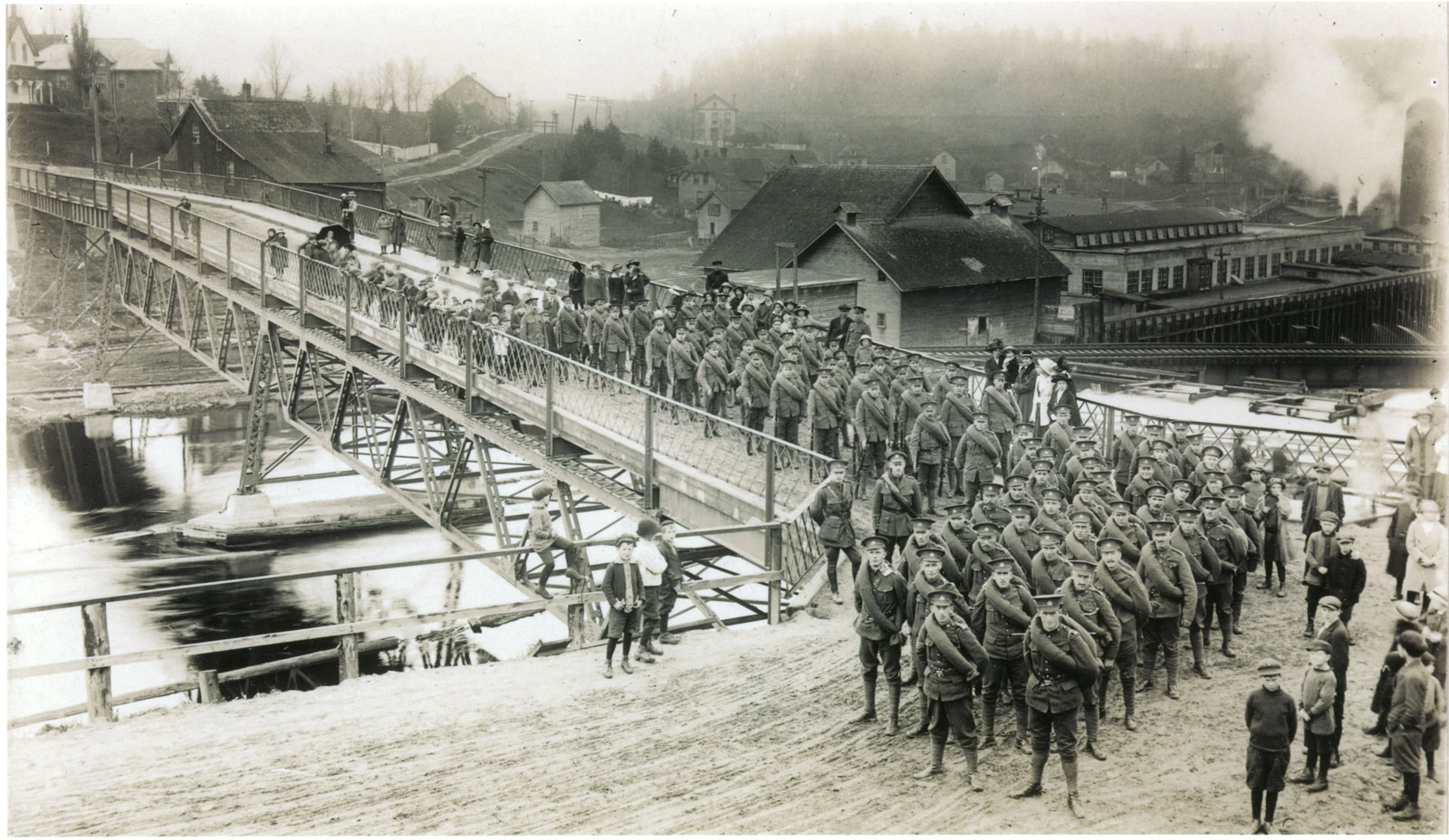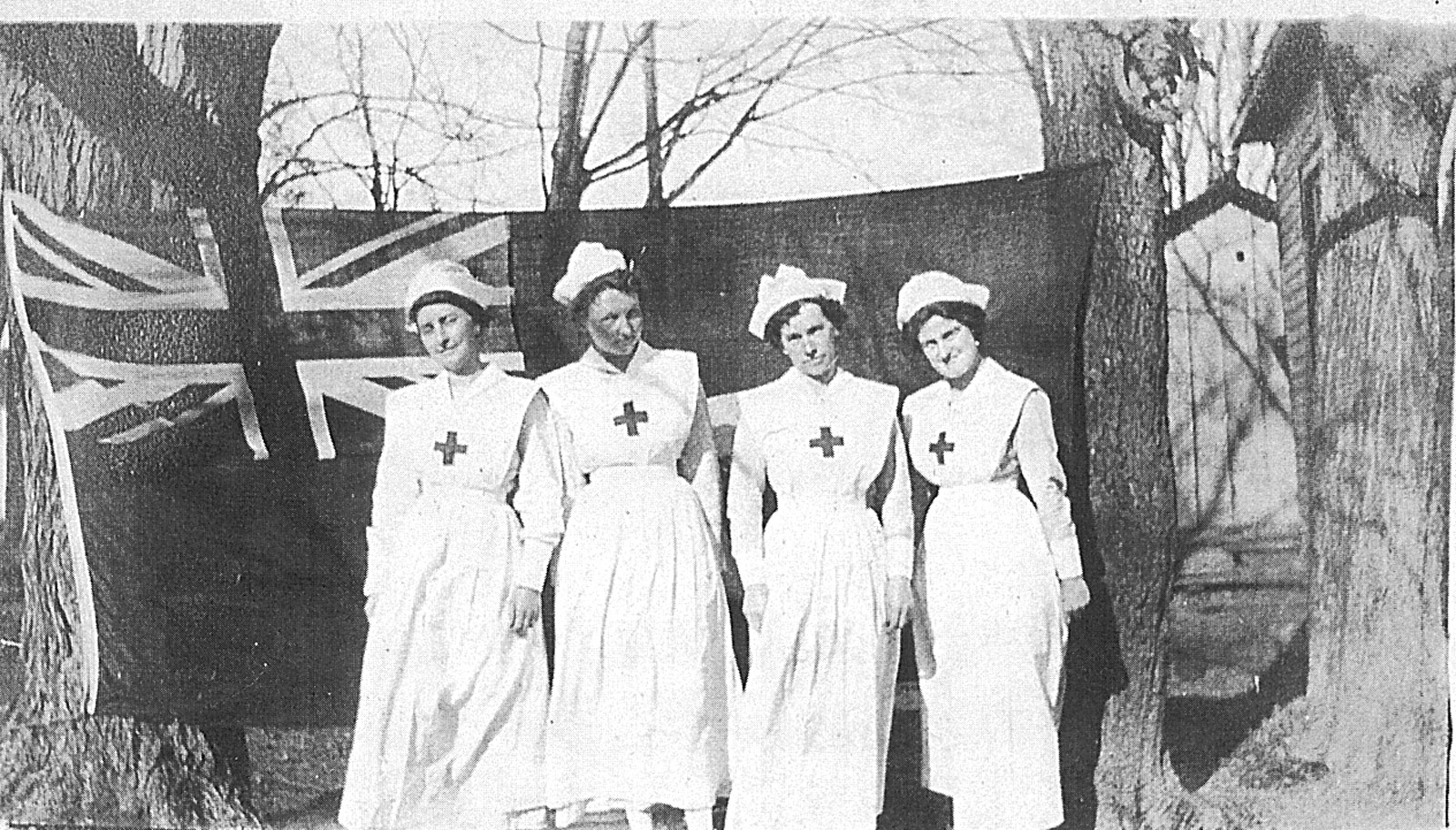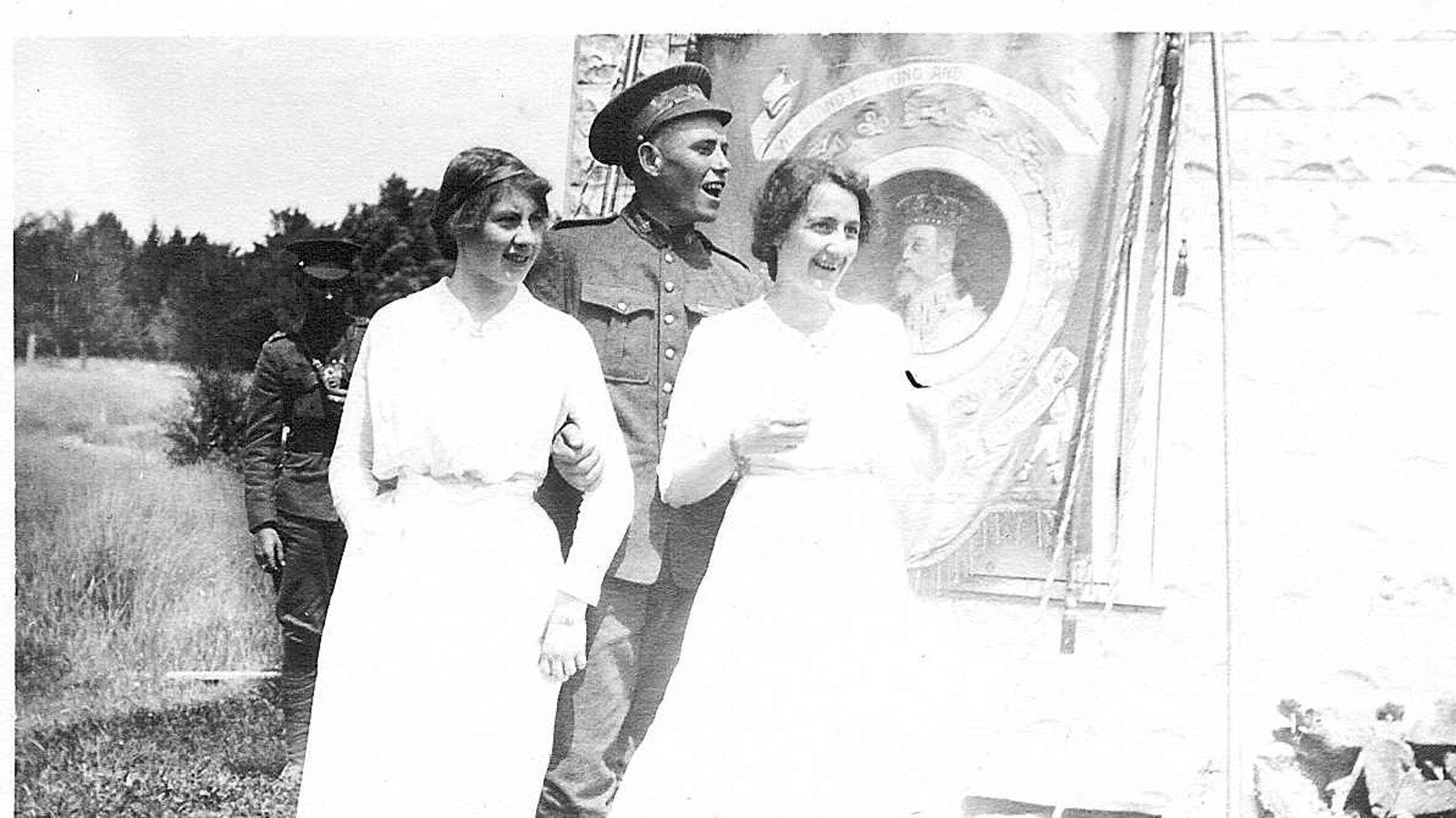
Courtesy the Sundridge - Strong Union Public Library. [Learn More]
By the time Britain declared their participation in World War I on August 4th 1914, taking Canada along with it, the threat of conflict had been brewing for some time. Canada's status as a colony of the United Kingdom at the time meant that we were deeply influenced by the politics of Europe, whether we wanted to be or not.
There were lots of reasons at home for Canadians to be enthusiastic about the war. Many unemployed and employed men enlisted in the military, while men who were unfit for service were able to take those jobs left behind at home, on farms and in factories. New industries popped up, some engineered by the government itself, such as manufacturing weapons and ammunition for use overseas. National pride and love for the British Commonwealth was very strong - so strong that citizens petitioned to change Berlin, Ontario's name to Kitchener as a symbolic way of rejecting German culture in Canada.
Canadians also went further in the First World War, demanding that citizens and immigrants of Austrian, Turkish, Hungarian, Ukrainian, Bulgarian, and German descent be locked up - a practice called "internment." Almost 9,000 people were interned, mostly men, but about 100 women and 150 children who were dependent on those men too. The interned men were put to work building roads and clearing land. Conditions were harsh and many of the internees were starved, dirty, and mistreated.
The population of Canada during World War I was around 8 million. 61,000 soldiers were killed in battle; 1,600 civilian Haligonians died and another 10,000 were injured when a ship carrying munitions blew up in the Halifax harbour. These deaths, and the hundreds of thousands of soldiers returning home with lifelong injuries and traumatic memories of their time in battle, changed every Canadian citizen irreparably.

Courtesy the Sundridge - Strong Union Public Library. [Learn More]
Some people have called these years women's years. And so they are for those mothers whose sons are fighting shoulder to shoulder with the Allies in the conflict of nations. We know what they have borne and what their sacrifice and what their gift to the Empire has been. Therefore, in that respect, these years probably are women's years.
- Mrs. Arthur van Koughnet, in a speech to the Empire Club of Canada, 1917
Although women were not allowed to fight in the Great War, many wanted to ready themselves. Some performed rifle drills and conducted military training, all by themselves, just in case of a invasion on Canadian soil. About 3,000 women served overseas in professions that were very feminized at the time, such as nursing. Canadian nurses were employed at military ranks and were eligible for pensions after the war - a benefit rarely extended to women in other countries at the time. Husbands of nurses also qualified for widower's pensions, in the unfortunate circumstances where nurses died during or after the war. Some nurses were badly shaken by their war experiences and suffered from symptoms of Post-Traumatic Stress Disorder - the phrase "shellshock" was coined in 1915 to refer to the emotional distress seen in soldiers who experienced World War I.
Other women worked as nurses at home in hospitals for convalescing soldiers; many women took on jobs that had been left by soldiers, from teaching to manufacturing. Many women supported the war effort through fundraising and sending thoughtful items overseas to troops, such as food, clothing, and care packages.
Some women, such as famous actor Marie Dressler, spent their wartime years fundraising by being spokeswomen for war bonds (called "Liberty Bonds" and "Victory Bonds" variously throughout the 20th century), as well as entertaining the troops overseas with song and dance.
News about the war dominated newspapers in the 1910s, before radio and television were available. Many at home also got their news about the war from personal letters sent home from their family members and friends. At the time, many such letters were shared amongst community members and reprinted in local newspapers. Many letters have been saved and digitized so that we can see what that correspondence looked like.
This three-page article about the Sundridge Women's Institute's efforts during the First World War illustrate the good that a community group could do:
A special meeting was held August 21, 1914 to discuss plans; money-making projects were essential to buy materials for knitting and sewing. Work meetings were to be held in the Public Library. Each Institute member was to leave a cup, plate and spoon there, no doubd long hours were spent in the library completing arduous tasks.
A concert presented in October 1914 netted $70.00 which was sent to the Patriotic Fund. Jam and jellies were requested for overseas hospitals. Proceeds from a lunch counter at the Fall Fair paid for materials to be sewn into necessities for the troops. Showers requesting gifts for soldiers were held in the Library.
Courtesy the Federated Women's Institutes of Ontario. [Learn More]
Some women "did their bit" by picking fruit during the war. In this oral history, Jeanne Cringan and Miss Sparling of Pembroke, Ontario discuss daily life, work, leisure, and the war efforts during the 1910s. Payment for picking fruit was 15 cents an hour, working from 7am to 6pm. Cringan and Sparling also say they "entertained the troops" who were stationed nearby during their training.

Courtesy the Oakville Museum. [Learn More]
some of their contributions during one of the war years. [Learn More]
Families whose male breadwinners had gone to fight in the war were usually put in a tough spot: military pay was not enough to support a family, and mothers who had to take care of their children were not able to take on jobs. The government made additional monthly payments to the wives of soldiers - $20 a month, to add to the minimum $1.10 a day that a private-rank soldier earned ($1 then is worth about $25 now, so this meant living on $1,300 a month). The Canadian Patriotic Fund was created to alleviate the poverty of soldiers' families: a cross between a welfare program and Victory Funds, the government collected donations from better-off families and distributed the money to eligible families. The total raised over the length of the war was $47 million, usually amounting to an extra $25 per month (an extra $625) plus a few dollars per child in each receiving family.
Unfortunately, the funds were not administered very well. Many women felt shame in having to ask for financial help and felt the stigma of being poor. Some women had their benefits cut off unfairly - the Patriotic Fund was distributed locally by volunteers, often middle- and upper-class citizens, who would listen to rumours and gossip and make decisions about whether the fund recipients were spending their money wisely or had a good reputation. Many recipients felt judged and discriminated against, and thought that the volunteers making the decisions were enforcing religious and moral viewpoints that shouldn't matter in the face of poverty.


One of the most famous accounts of women at home during the Great War is a book Lucy Maud Montgomery wrote: Rilla of Ingleside. Rilla's experience as a teen during the First World War ranges from fear for her brothers' and friends' safety when they enlist, her organizing efforts with the Junior Red Cross, her protective feelings for her sickly brother (who gets labelled a coward for not fighting), reading letters from soldiers about the horrible things they've seen, and even took care of a baby whose father enlisted and mother died. Rilla of Ingleside is now in the public domain and can be read online.
Oakville Public Library's wonderful Oakville Heritage Moments project produced a video on the First World War, including "farmerettes" and other women taking to the workplace during the war and "keeping the home fires burning":



